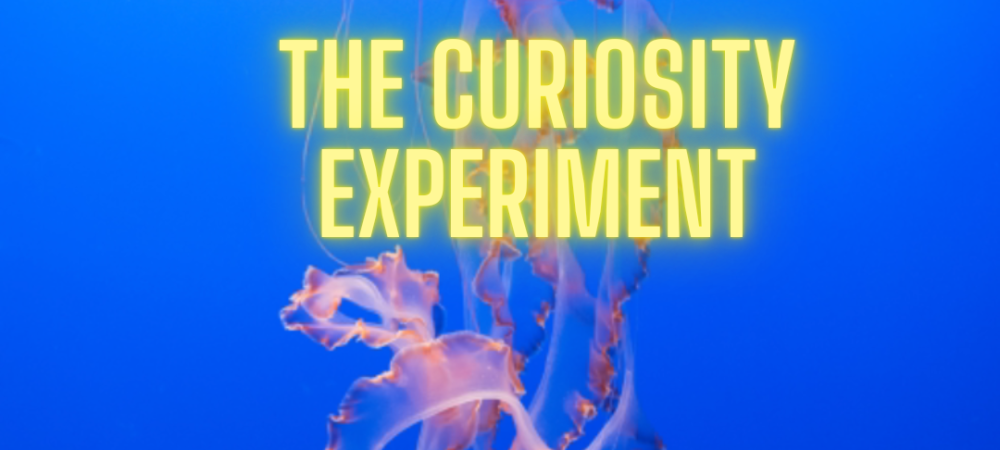How can we find purpose through experimentation with maximum curiosity and maximum efficiency?
Purpose is such a big word isn’t it. How do we find purpose? Where do we start? And what if we get it wrong?
I’ve been pondering over this of late and how hard it is to think or plan out the ‘right’ answer. A bit like planning out projects in a ‘waterfall-style’ where you feel like you need to know the answer before you start. You know the ones. It’s those projects where we spend months writing a clear strategy upfront, speak to all the relevant stakeholders, map out the work in as much detail as possible and then systematically deliver it over the course of the upcoming months or years. The end feels far away and we’re often left wondering if we’re actually following the best path, but it feels way too hard and complicated to change course now so we just plough on.
This is how I feel about ‘finding purpose’. It’s way too hard (and feels risky) to plan it out upfront so the default option seems to be continuing with the current status quo. But that’s what got me thinking about how agile project management might help here. What would an agile approach to life hacking look like? How could I follow my curiosities in considered sprints rather than set out to find purpose in one fell swoop? Hence, the introduction of The Curiosity Experiment: an experiment in finding purpose, one sprint at a time.
The first curiosity sprint came about through chance. I’d been doing a small piece of work with the University of East London on work related flow-state and my supervisor shared details of a 50 hr associate lectureship opportunity to create and teach a module on the psychology of compassion for the University of West Scotland. This seemed like a great fit for me as I’d studied compassionate leadership as part of a recent MSC, teach and practice yoga and meditation and would love to learn more about this subject. It was an easy yes and I set myself a two week sprint to complete the work with three clear success criteria.
- Is the work useful for the world?
- Does it make me come alive?
- Does it make sufficient money?
So what did I find?
Did the work feel useful for the world? Absolutely. Compassion is defined by Paul Gilbert, as ‘a sensitivity to suffering in the self and others, with a commitment to try and alleviate and prevent it’. The evidence base is absolutely fascinating with benefits ranging from better emotional regulation and mental health, improved social and interpersonal relationships, reduced stress and improved wellbeing.
One of the most interesting insights for me was around the three flows of compassion; having self compassion, compassion for others and being able to receive compassion. These three flows can be interdependent or independent and there’s a fair amount of evidence to suggest that for many it’s easier to be compassionate to others than it is to ourselves.
According to Kristen Neff, a lead researcher in the field of self-compassion, there are significant benefits we can experience from having greater self compassion. We’re less likely to have ruminating thoughts (which are often linked to depression, anxiety and stress) and are thought to experience greater happiness and curiosity and the ability to master goals.
For me the application of compassion in leadership is particularly interesting and I’m inspired to learn more about the approach of companies like Potential Project who offer compassionate leadership training and assessments.
Did it make me come alive?
Yes in short. I loved researching the subject and reading the latest papers on compassion, especially in relation to the interventions being created and tested. I also enjoyed translating the material into relevant lectures, creating tasks and sharing additional material for the students to read or watch.
The one downside was in relation to the way of working. I get a lot of energy from other people, and outside of meetings with my supervisor I had little interaction with others whilst delivering this material. Whilst the work itself was really interesting I think I’d miss being around people if I were to do something like this full time in the future.
Did it make sufficient money?
Well I guess ‘what’s sufficient is the first question’. For me as a side-project this was great but possibly not something for full time work at this stage.
Considerations for the next sprint
This has been a great experiment and I’ve learnt a lot about compassion and the type and way I like to work most. For the next sprint I’m going to be working on curiosity itself, creating a workshop, online course and website. As a lot of this work will be remote, I’m going to consider ways of bringing in more connection, perhaps partnering with other people and definitely making uses of resources such as co-working spaces and virtual deep work platforms like Flown.
Finally, sprint life can be pretty intense. The level of focus and concentration required is typically isolated to certain regions in the brain. The Central Executive Network is where we do a lot of deep work. It’s where we problem solve, have a laser focus on goals and apply self control to get things done. During this sprint it feels as though I’ve been hanging out there a lot! But what about mind wandering, curiosity and creativity. That place of open awareness where deep insights can emerge? How can I hang out more there each day too? For the next sprint I’m going to learn a bit more about the default mode network and explore short daily interventions I can build into agile sprints to allow for more curiosity and creativity everyday
1
1
